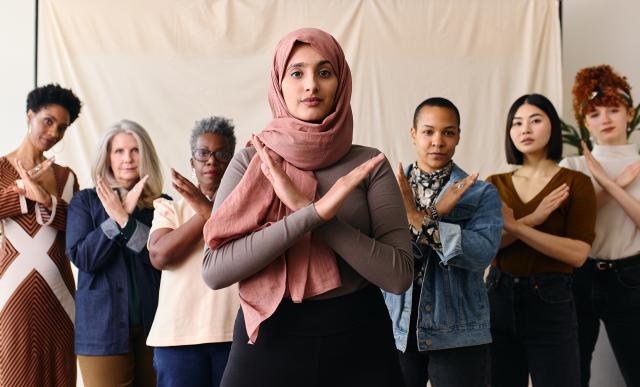
The importance of examining unconscious bias
What is unconscious bias and why should we talk about it? Unconscious biases, also known as implicit biases, are innate or learned stereotypes everyone has in the back of their brains that shape the way we approach people, groups, and institutions. We must work actively to examine and confront our reactions to them.
Why is it important to know your biases?
Unconscious biases around race, age, gender identity and expression, religion, ethnicity, sexuality, socioeconomic status, ability, and so on cause harm. Because they're happening in the background of our minds, we are unaware of how we make decisions based on our bias. It's our responsibility to learn our biases, understand their origins, and reframe the narratives we write about people because of them.
How do we become aware of our bias?
Beginning in 2020 Slipstream partnered with Step Up: Equity Matters for their Uprooting Bias and Uprooting Microaggressions challenges. We also took the implicit association test (IAT) as a tool to collect data on ourselves and where our biases might exist.
The IAT is imperfect, and we agree with critics that say it isn't a stand-alone solution. We suggest this as a starting point, but you must then begin to question yourself. How do you behave toward people that are different from you? "I don't," is the only wrong answer. If you're saying that, dig deeper—remember, we all have implicit bias.
Learn about how different types of bias manifest. Then figure out where and how you make unconscious judgments based on bias. Be inquisitive. Who do you surround yourself with? What patterns do they fit (or not fit)? Question how you make decisions. Pay attention to your behaviors. For example, when you look through job applications, do you tend to pull more white-sounding names than non-white-sounding names? What might that mean?
Keep notes. Write down your biases, behaviors, and a plan to address them. Sounds hard, doesn't it? It can be, but it's an important step to driving change. If you've read this far, it means you want to confront your biases and do the work. Remember: you aren't bad or immoral for having bias.
What do you do once you're aware of your biases?
Examine where you learned them. How could you work to actively unlearn these biases? Learn about the sources of your biases and seek perspectives from those you hold a bias against. Seek out books, TV, podcasts, movies, and news by and about those groups.
Talk to your friends, family, and colleagues. Seek the opinions of coworkers you don't normally connect with. Find points of view that challenge you and execute strategies to change that.
For example, if you noticed that you're more likely to interview people with white-sounding names versus non-white-sounding names, can someone redact personal information before you review applications?
Why does this matter?
Conscious and unconscious bias impact the way we interact with the world. If we don't confront our biases, we miss the opportunity to learn, connect, and grow. If our biases go unchecked, we find ourselves in a vacuum of people who think, look, and navigate the world the same way we do. We miss out on opportunities to learn from diverse viewpoints.
Is understanding implicit bias enough?
No. It's just the start. Implicit bias training alone is often a part of "lukewarm diversity training" that induces anger and frustration. To be effective, we must realize that racism, sexism, ableism, ageism, and other social justice issues cannot be solved by individual action—they are structural and organizational problems. Dig into your own biases and push yourself to counteract them. Change doesn't happen in isolation; talk to others and hold the systems accountable that produce these biases.
Conversations about individual and collective biases at Slipstream continue. We challenge ourselves to get uncomfortable and act on what we learn to make change. Check out our equity, diversity, and inclusion page to learn more about how we confront bias and hold ourselves accountable.